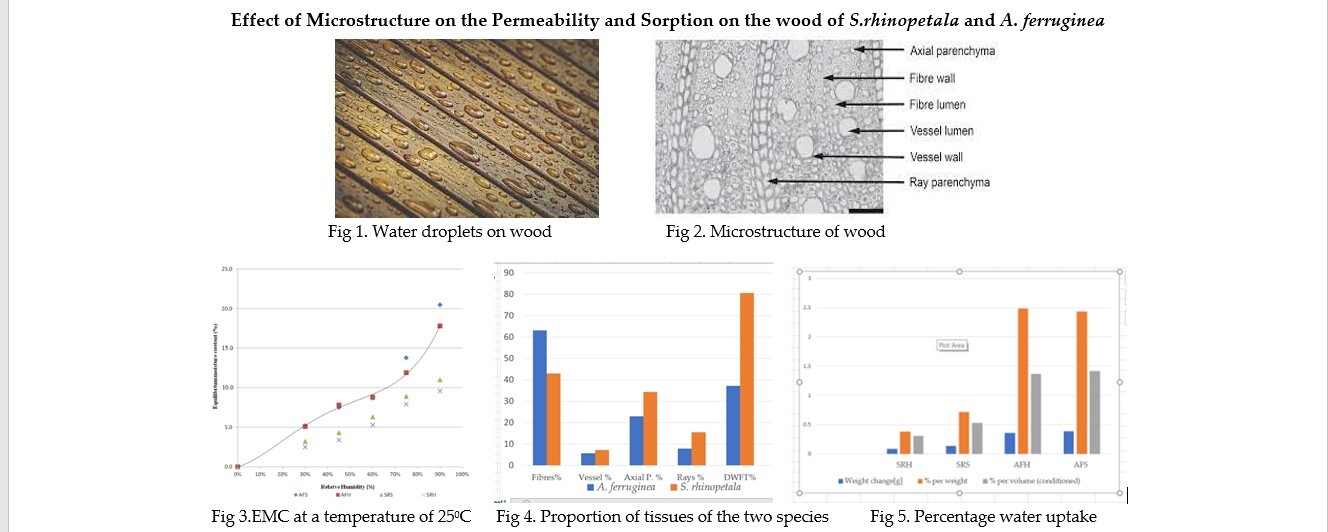Effect of Microstructure on the Permeability and Sorption of Wood of Sterculia rhinopetala and Albizia ferruginea
DOI:
https://doi.org/10.31357/ait.v1i3.5341Keywords:
anatomical features, permeability, sorption, Ghanaian Hardwood speciesAbstract
This paper sets to find out the effect of the microstructure of wood on the permeability and sorption of the wood of Sterculia rhinopetala and Albizia ferruginea. Permeability, the way of ingress of water into wood mass, is one of the most variable properties of timber and it further influences nearly all the physical properties of wood. Wood exposed to high humidity conditions or to liquid water during use may be subjected to biological deterioration which makes equilibrium moisture content of wood very important. Equilibrium moisture content is the moisture level where the wood neither gains nor loses moisture since it is at equilibrium with the relative humidity and temperature of the surrounding environment. Sixteen randomly sampled specimens of each of the wood of Sterculia rhinopetala and Albizia ferruginea species (heartwood and sapwood) with dimensions 3 cm x 3 cm x 3 cm were exposed at various relative humidity conditions of 30 %, 45 %, 60 %, 75 % and 90 % in a temperature and humidity-controlled climate chamber. The order of water uptake in terms of percentage volume is arranged from the lowest to the highest. Sterculia rhinopetala heartwood had the lowest uptake per volume with a value of 0.31 %. On the uptake per weight Sterculia rhinopetala heartwood again had the lowest uptake whilst Albizia ferruginea had the highest with a value of 6.77 %. The sapwood of Sterculia rhinopetala had a relatively higher uptake per volume value of 0.53 % and a value of uptake per weight of 0.72 % compared to the heartwood. The equilibrium moisture content values of Sterculia rhinopetala suggests that it can have minimal dimensional changes when used in both the Southern and the Northern parts of Ghana.

Downloads
Published
How to Cite
License
Copyright (c) 2022 Gladys Ama Quartey, John, Bernard

This work is licensed under a Creative Commons Attribution-NonCommercial-NoDerivatives 4.0 International License.
The Authors hold the copyright of their manuscripts, and all articles are circulated under the terms of the Creative Commons Attribution License, which permits unrestricted use, distribution, and reproduction in any medium, as long as that the original work is properly cited.
The use of general descriptive names, trade names, trademarks, and so forth in this publication, even if not specifically identified, does not imply that these names are not protected by the relevant laws and regulations. The authors are responsible for securing any permissions needed for the reuse of copyrighted materials included in the manuscript.




